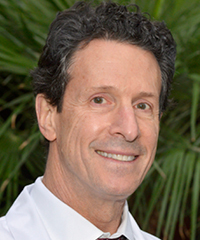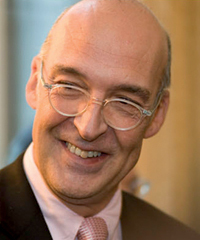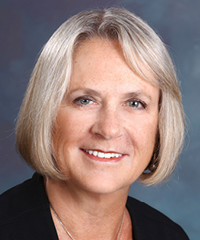Rheumatology
Rheumatoid Arthritis
Unmet Treatment Needs Span the Natural History of Rheumatoid Arthritis
Overview
The need for newer therapies with differing mechanisms of action (MOAs) continues for many patients with established rheumatoid arthritis (RA). Achieving sustained, drug-free remissions in this group is a key unmet need. In addition, drugs that target the early pathophysiology of preclinical RA are also needed so that the development of clinical disease can potentially be averted altogether. Our featured experts in the field discuss some of the unmet treatment needs in RA.
Q: What are some of the unmet treatment needs in RA today?
Jonathan Kay, MD
|
|
“We do not have a way of identifying patients who are at risk for developing RA and treating them with an agent that is directed toward the pathophysiology that precedes clinically evident disease. That is the major thrust of innovative research now: to come up with ways of preventing RA.”
We still have patients who do not respond well at all to any of the commercially available RA therapies. It is a small percentage, but for those patients we really need a drug that will control their disease activity. Another unmet need is a treatment that will put patients into a drug-free remission.
We also lack a way of intervening before the disease starts, to prevent the disease from really ever manifesting. We have gone from treating established RA to treating early inflammatory arthritis and preventing established disease from occurring. However, we do not have a way of identifying patients who are at risk for developing RA and treating them with an agent that is directed toward the pathophysiology that precedes clinically evident disease. That is the major thrust of innovative research now: to come up with ways of preventing RA.
Leonard H. Calabrese, DO
|
|
“This may be a point in the natural history of RA during which curative therapies might be introduced—as we believe that this is a distinctly important phase of the pathophysiology—and, so, I do think that this represents an unmet treatment need.”
I agree, and I think that one of the more interesting things occurring in the field relates to early recognition, for example, the use of anti-citrullinated peptide antibodies (ACPAs) in primary care. A patient with virtually no symptoms that are suspicious for RA or inflammatory arthritis can be referred to rheumatology now. For example, the patient may have ACPA levels of >250 U/mL, with no family history and perhaps merely some vague discomfort. While this type of patient is perhaps representative of a small population, we really do not have reliable biomarkers for detection. This may be a point in the natural history of RA during which curative therapies might be introduced—as we believe that this is a distinctly important phase of the pathophysiology—and, so, I do think that this represents an unmet treatment need.
John R. P. Tesser, MD
|
|
“Every time a new medicine emerges, particularly one with a new MOA, we chip away at the population to gain ground with additional patients who are amenable to this type of control (ie, remission or low disease activity).”
I agree with these points. There are so many studies in early RA populations examining the impact of early treatment, especially when coupled to a treat-to-target strategy, that can really get patients into remission. However, we are now seeing people with very high serologies and little or no arthralgia symptoms—essentially patients with what might become early RA. That finding actually prompts me to want to see these patients and monitor them, perhaps once a year or so, because there is a >50% chance that RA will develop within 3 years in these patients.
Dr Calabrese:
We do know from widely published studies that ACPA, by itself, is not sufficient to cause this disease, but it is a profoundly influential risk factor, and more recent data show that ACPA, by itself, may be associated with diffuse osteopenia. So, I think this is an area that is rich for further research and investigation. Another unmet need, as alluded to earlier, is that of cure. We are 20 years into the use of biologics, and we are no closer to curing this disease than we were 20 years ago. We know more about RA than we do about any other rheumatic disease, by far, in terms of pathogenesis, natural history, and the number of clinical trials, etc. But we have not made much progress in terms of finding a cure or putting all patients into remission, so, in that respect, we have reached somewhat of a plateau.
Dr Tesser:
We have new medicines emerging relatively frequently now. None of these medicines get all patients with RA to very low disease activity or remission, but there are a certain number of patients who do achieve those measures of control. Every time a new medicine emerges, particularly one with a new MOA, we chip away at the population to gain ground with additional patients who are amenable to this type of control (ie, remission or low disease activity). It is an ever-increasing challenge, however, because there are always older patients who have tried multiple drugs. And, if we think of patients having individual pathophysiologic mechanisms that may be specific to their disease, or amenable to treatment with certain MOAs, that just underscores the point that, when considering all patients with RA, no single medication, whether a novel medication or one that has been available for 20 years, is going to make a huge amount of difference if you are looking for that difference in the entire population of patients with RA.
Vibeke Strand, MD, MACR, FACP
|
|
“We also need to consider the continued need to switch therapies. Some 30% of patients at 1 year and 50% at 2 years may require a switch to a new therapy, according to the latest data in the Corrona database.”
Sometimes we are treating over 40 years of disease, especially in patients who developed RA at a young age, and I am not sure that we actually have a sufficient number of treatment alternatives to successfully manage patients for that duration. Whether it is immunogenicity or other background changes in the disease process stemming from the interventions that we have to use, some patients do not stay on therapy for longer than a couple years—albeit with some not-so-common exceptions. So, we also need to consider the continued need to switch therapies. Some 30% of patients at 1 year and 50% at 2 years may require a switch to a new therapy, according to the latest data in the Consortium of Rheumatology Researchers of North America (Corrona) database. In other settings, where perhaps people are not aiming for such tight control, we see less switching, but across settings, we still see that many patients are not able to stay on a given therapy for years.
Dr Kay:
With respect to “tight control,” the “treat-to-target” movement has been around for nearly 10 years, in which disease activity measures are calculated to direct treatment, aiming to normalize these values for each patient. However, measures such as the Disease Activity Score in 28 joints (DAS28) do not necessarily reflect true remission because a patient can still have several swollen or tender joints and have a DAS28 score that is in the range of DAS28 remission. Additionally, calculating this score requires that acute-phase reactant levels be available at the time of the visit, which, in the United States, is challenging. Thus, we need to use disease activity measures that can be calculated at the time of the treatment decision and that better reflect true remission.
References
Singh JA, Saag KG, Bridges SL Jr, et al. 2015 American College of Rheumatology Guideline for the Treatment of Rheumatoid Arthritis. Arthritis Rheumatol. 2016;68(1):1-26.
Smolen JS, Landewé R, Bijlsma J, et al. EULAR recommendations for the management of rheumatoid arthritis with synthetic and biological disease-modifying antirheumatic drugs: 2016 update. Ann Rheum Dis. 2017;76(6):960-977.
Strand V, Miller P, Williams SA, Saunders K, Grant S, Kremer J.. Discontinuation of biologic therapy in rheumatoid arthritis: analysis from the Corrona RA Registry. Rheumatol Ther. 2017;4(2):489-502.
Ten Brinck RM, Toes REM, van der Helm-van Mil AHM. Inflammation functions as a key mediator in the link between ACPA and erosion development: an association study in clinically suspect arthralgia. Arthritis Res Ther. 2018;20(1):89.














